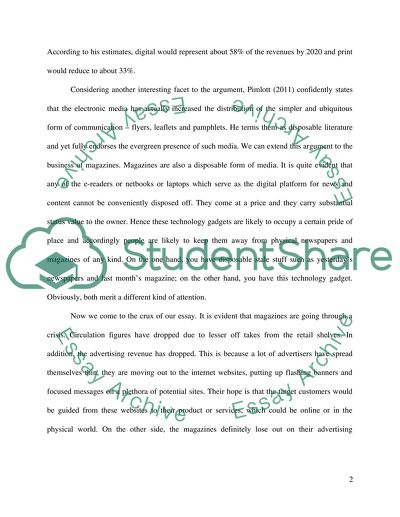Cite this document
(“The Future of the Magazine Business: Looming Uncertainty Essay”, n.d.)
Retrieved from https://studentshare.org/journalism-communication/1428472-the-future-of-the-magazine-business-looming-uncertainty
Retrieved from https://studentshare.org/journalism-communication/1428472-the-future-of-the-magazine-business-looming-uncertainty
(The Future of the Magazine Business: Looming Uncertainty Essay)
https://studentshare.org/journalism-communication/1428472-the-future-of-the-magazine-business-looming-uncertainty.
https://studentshare.org/journalism-communication/1428472-the-future-of-the-magazine-business-looming-uncertainty.
“The Future of the Magazine Business: Looming Uncertainty Essay”, n.d. https://studentshare.org/journalism-communication/1428472-the-future-of-the-magazine-business-looming-uncertainty.


